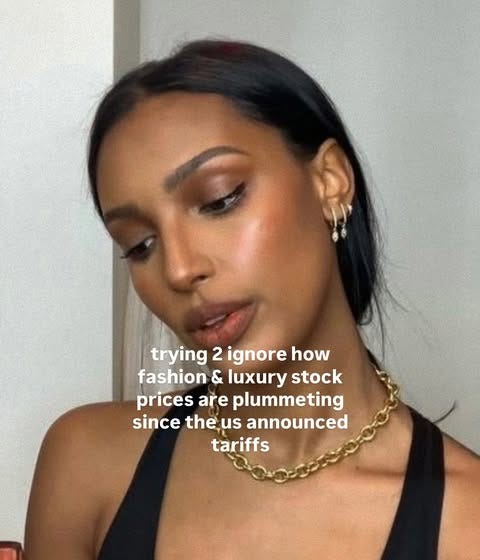A $160 Lipstick And How Fashion Brands Are Probably Trying To Deal With The Great Luxury Slump
Fashion's prices are rising, and they're getting harder to justify. Here's what it could mean for the future of the industry.
Perhaps the biggest and most popular fashion trend of early 2025 was recession indicators—the idea that changes in fashion trends can, in fact, be a reflection of mass consumer sentiment. Suddenly, any fashion trend that was rooted in minimalism or simplicity or not-so-fun-ness, or anything that had previously picked up steam around 2008, was treated as an ominous sign.
Jeans and a T-shirt dominating Coachella style rather than its hallmark carefree, bold fashion? Must be the economy. Longer hemlines rising in popularity? Definitely a recession. The return of the Alexander McQueen skull-patterned scarf which took over late 2000s fashion? Yep. We’re doomed. I mean, why bother tracking the stock market when analyzing fashion trends can do the trick? Right?
And even though many of these were simply interesting correlations (and correlation doesn’t equal causation!!!), the way people were linking fashion trends with the economy said a lot about the mood. As the US stock market plummeted following global import tariff headlines, and since the United States imports ~98% of its clothing, the relationship between economic sentiment and fashion was made clearer than ever.
BUT I THOUGHT THE LUXURY INDUSTRY WAS A SAFE PLACE?
As much as recession indicators permeated fashion discourse this year, and though they have been studied in fashion and beauty for decades, they’re a relatively new realization for the luxury fashion industry.
Historically, luxury goods have been seen as more “recession-proof”, since luxury clients (i.e., the one percent) are typically unaffected by recessions, or more likely to come out stronger on the other side.
Take LVMH—the biggest fashion and luxury company on the planet. Despite the 2008 global financial crisis, LVMH only saw its revenues drop 1% from 2008 to 2009, with its Fashion & Leather Goods division actually seeing a 5% increase in revenues that year. Sounds pretty recession-proof to me.
However, in recent decades, luxury brands focused on expanding their product lines and offerings under $1,000, or even under $500, as a way of reaching even more consumers, becoming more recognized, and, of course, increasing revenues. As the fashion world continued to move further away from the custom and handmade world of couture and towards ready-to-wear, the definition of ready-to-wear expanded. Today, you can buy anything from baseball caps to keychains to socks boasting a loud logo. And, of course, for a luxury markup.
While a widening consumer base can be great, it does make fashion brands more vulnerable to the mood swings and shifts of the masses. In other words, less recession-proof. So, as recession indicators became the latest trend, how are fashion and luxury brands responding?
Keep reading with a 7-day free trial
Subscribe to data, but make it fashion to keep reading this post and get 7 days of free access to the full post archives.



